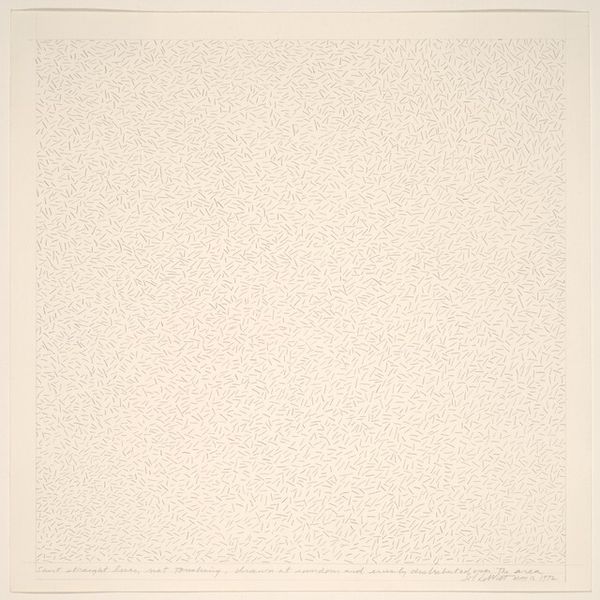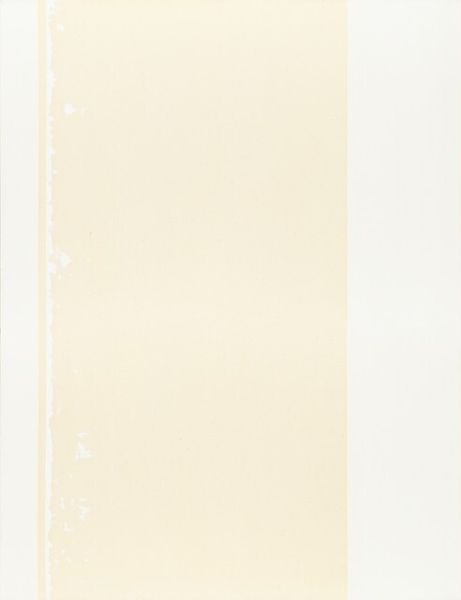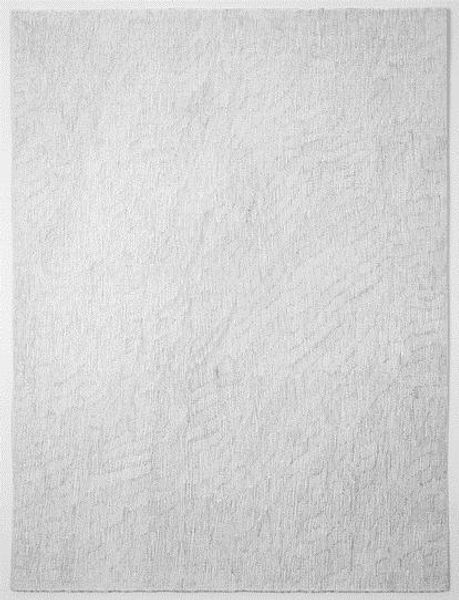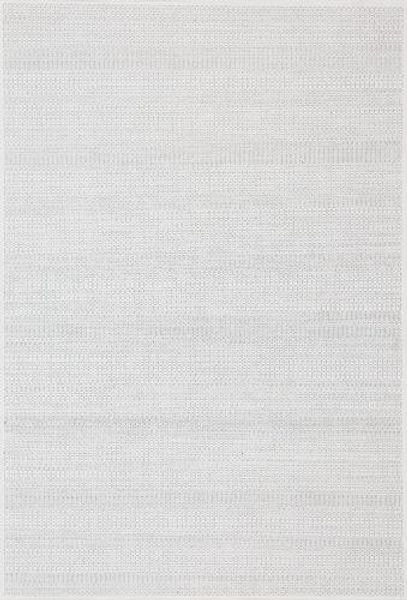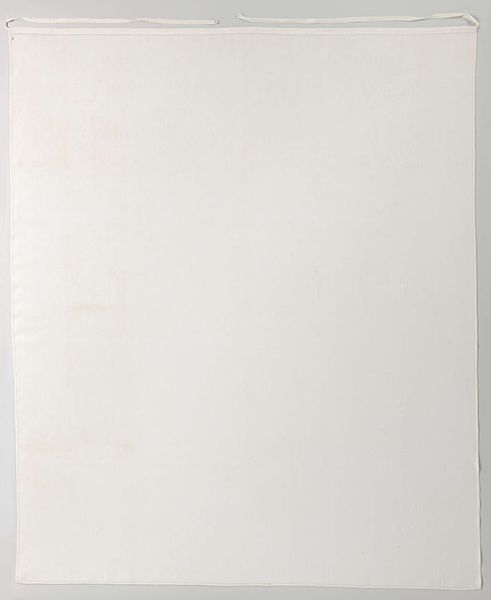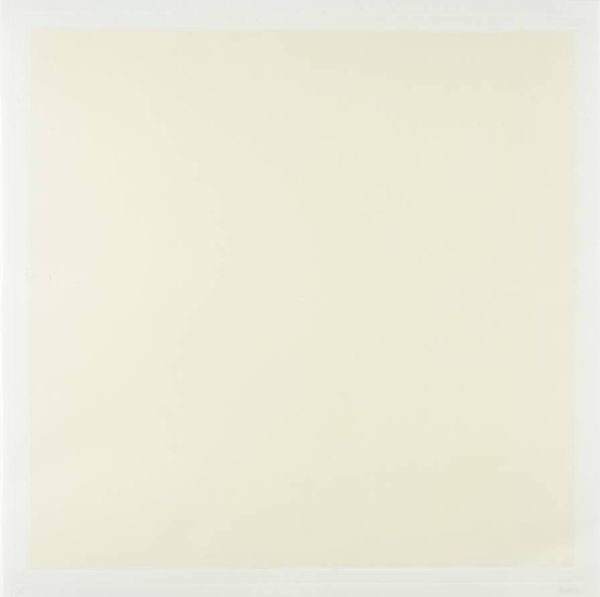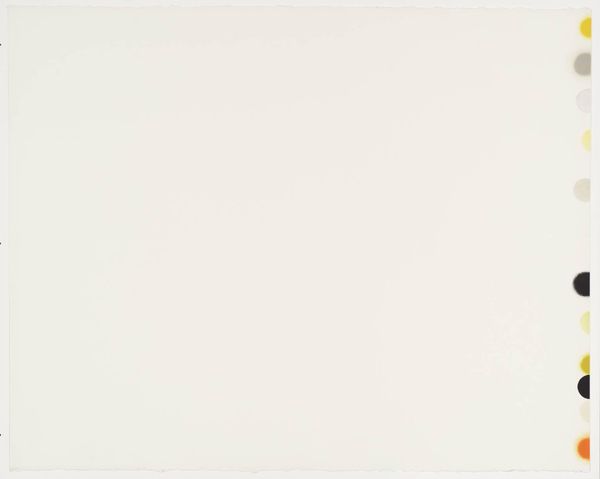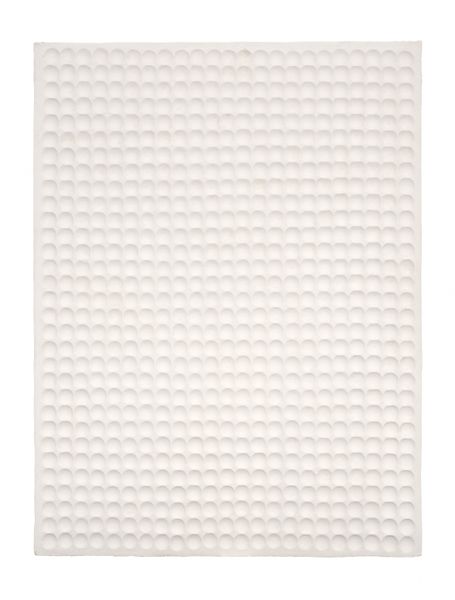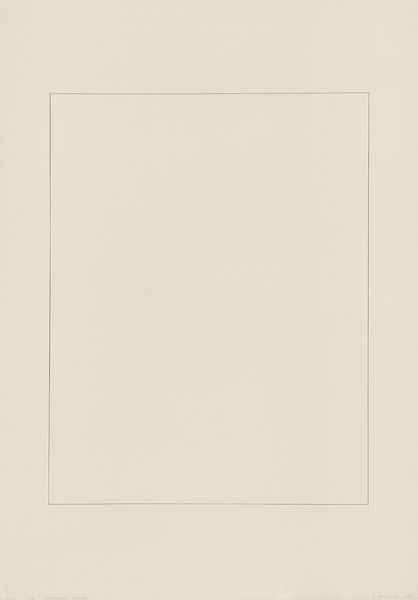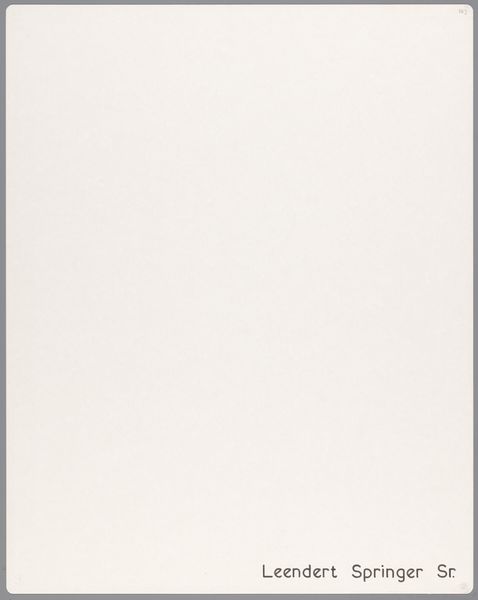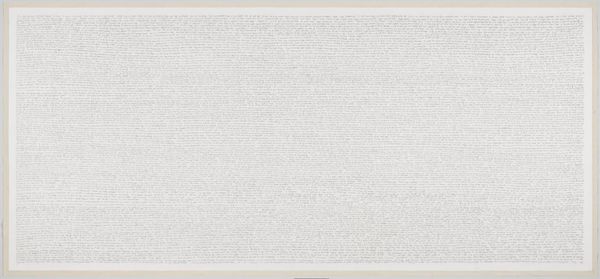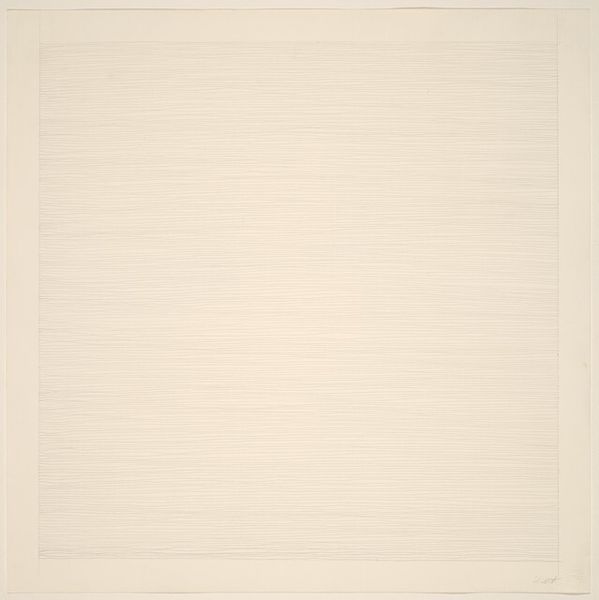
Dimensions: support: 1707 x 1527 mm
Copyright: © James Hugonin | CC-BY-NC-ND 4.0 DEED, Photo: Tate
Curator: Standing before us is James Hugonin’s large work, Untitled (VII), currently part of the Tate Collections. Editor: My first impression is of a subtle, almost ethereal field of color. It’s quite calming, yet…repetitive. Curator: Indeed. Hugonin’s practice involves intricate systems, carefully plotting color relationships and spatial arrangements. It prompts an investigation into how visual structures communicate meaning. Editor: But beyond the structural analysis, I wonder about the context. What social or political landscape nurtured such a dedication to seemingly minimalist variation? Was this a reaction against the bold pronouncements of prior generations? Curator: That’s a fascinating entry point. The very act of creating such a piece in a world clamoring for attention becomes a quiet, and perhaps radical, statement. Editor: It seems we find ourselves at opposite ends of a spectrum, but it’s enriching to consider that the art can contain both. Curator: Absolutely. It's a testament to the artist’s work that we find ourselves having this conversation.
Comments
Join the conversation
Join millions of artists and users on Artera today and experience the ultimate creative platform.
tate 7 months ago
⋮
James Hugonin's paintings consist of numerous, minute rectangles of colour located within a grid of ruled lines. This grid is central to all Hugonin's paintings and acts as a basic structure onto which the coloured marks are then intuitively placed. He has described this process: 'The grid I use is a forming principle, a structure to work with and to work against. It is a systematic structure imposed upon the surface, but if I use it inventively, it gives me tremendous freedom to create complexities of rhythm and pattern. I need something stable: the very regularity of the grid is needed to oppose the irregularities of the rhythms. All of these configurations that I put down are intuitively arrived at, they do not conform to any pre-planned system. I always want to make something that will defy the system I have initially imposed - the system of the grid itself' (quoted in James Hugonin, exhibition catalogue, Serpentine Gallery, London 1991, [p.3]). Untitled (VII) is characteristic of Hugonin's paintings in its scale and visual aspect. It is part of a series of paintings, all identical in size, begun in 1989 and exhibited at Kettle's Yard in 1996. When viewed from close up, as the artist would while applying the paint, the separate marks and their colours are clearly discernible, but when viewed from a distance they dissolve into a field of shimmering, indeterminate colour which the artist equates with the qualities of shifting light. It is Hugonin's desire to achieve in his paintings something of the experience of watching light, and shadow, moving across a wide expanse of landscape and to emphasise the dynamic and transient quality of nature: 'It is in the nature of my paintings that you can never look at them and see the same thing twice. They have no single focal point; there is no passage that is dominant. The eye may settle for a moment on a certain movement, but as it moves again across the painting that separated configuration will disappear and re-form: things do not stay the same. This is absolutely crucial to my work: what I am trying to do is to present the evanescence of things, to heighten the fact that everything is in essence transitory. What I am working towards is an over-all shimmer on the surface, I want the painting to attain a quality as of shifting light' (ibid., [p.4]). The artist regards Untitled (VII) and its related works as being the closest he has come to date in achieving these goals. Michela ParkinJune 1997
